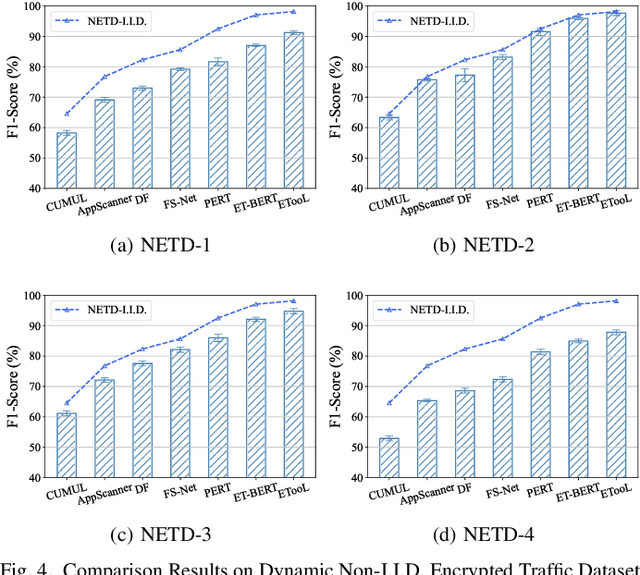Jing Yu
Biomedical Imaging Group Rotterdam, Department of Radiology & Nuclear Medicine, Erasmus MC - University Medical Center Rotterdam, Rotterdam, the Netherlands, Department of Epidemiology, Erasmus MC - University Medical Center Rotterdam, Rotterdam, the Netherlands
CoBel-World: Harnessing LLM Reasoning to Build a Collaborative Belief World for Optimizing Embodied Multi-Agent Collaboration
Sep 26, 2025



Abstract:Effective real-world multi-agent collaboration requires not only accurate planning but also the ability to reason about collaborators' intents -- a crucial capability for avoiding miscoordination and redundant communication under partial observable environments. Due to their strong planning and reasoning capabilities, large language models (LLMs) have emerged as promising autonomous agents for collaborative task solving. However, existing collaboration frameworks for LLMs overlook their reasoning potential for dynamic intent inference, and thus produce inconsistent plans and redundant communication, reducing collaboration efficiency. To bridge this gap, we propose CoBel-World, a novel framework that equips LLM agents with a collaborative belief world -- an internal representation jointly modeling the physical environment and collaborators' mental states. CoBel-World enables agents to parse open-world task knowledge into structured beliefs via a symbolic belief language, and perform zero-shot Bayesian-style belief updates through LLM reasoning. This allows agents to proactively detect potential miscoordination (e.g., conflicting plans) and communicate adaptively. Evaluated on challenging embodied benchmarks (i.e., TDW-MAT and C-WAH), CoBel-World significantly reduces communication costs by 22-60% and improves task completion efficiency by 4-28% compared to the strongest baseline. Our results show that explicit, intent-aware belief modeling is essential for efficient and human-like collaboration in LLM-based multi-agent systems.
A Vision-Language Pre-training Model-Guided Approach for Mitigating Backdoor Attacks in Federated Learning
Aug 14, 2025Abstract:Existing backdoor defense methods in Federated Learning (FL) rely on the assumption of homogeneous client data distributions or the availability of a clean serve dataset, which limits the practicality and effectiveness. Defending against backdoor attacks under heterogeneous client data distributions while preserving model performance remains a significant challenge. In this paper, we propose a FL backdoor defense framework named CLIP-Fed, which leverages the zero-shot learning capabilities of vision-language pre-training models. By integrating both pre-aggregation and post-aggregation defense strategies, CLIP-Fed overcomes the limitations of Non-IID imposed on defense effectiveness. To address privacy concerns and enhance the coverage of the dataset against diverse triggers, we construct and augment the server dataset using the multimodal large language model and frequency analysis without any client samples. To address class prototype deviations caused by backdoor samples and eliminate the correlation between trigger patterns and target labels, CLIP-Fed aligns the knowledge of the global model and CLIP on the augmented dataset using prototype contrastive loss and Kullback-Leibler divergence. Extensive experiments on representative datasets validate the effectiveness of CLIP-Fed. Compared to state-of-the-art methods, CLIP-Fed achieves an average reduction in ASR, i.e., 2.03\% on CIFAR-10 and 1.35\% on CIFAR-10-LT, while improving average MA by 7.92\% and 0.48\%, respectively.
RecGPT Technical Report
Jul 30, 2025



Abstract:Recommender systems are among the most impactful applications of artificial intelligence, serving as critical infrastructure connecting users, merchants, and platforms. However, most current industrial systems remain heavily reliant on historical co-occurrence patterns and log-fitting objectives, i.e., optimizing for past user interactions without explicitly modeling user intent. This log-fitting approach often leads to overfitting to narrow historical preferences, failing to capture users' evolving and latent interests. As a result, it reinforces filter bubbles and long-tail phenomena, ultimately harming user experience and threatening the sustainability of the whole recommendation ecosystem. To address these challenges, we rethink the overall design paradigm of recommender systems and propose RecGPT, a next-generation framework that places user intent at the center of the recommendation pipeline. By integrating large language models (LLMs) into key stages of user interest mining, item retrieval, and explanation generation, RecGPT transforms log-fitting recommendation into an intent-centric process. To effectively align general-purpose LLMs to the above domain-specific recommendation tasks at scale, RecGPT incorporates a multi-stage training paradigm, which integrates reasoning-enhanced pre-alignment and self-training evolution, guided by a Human-LLM cooperative judge system. Currently, RecGPT has been fully deployed on the Taobao App. Online experiments demonstrate that RecGPT achieves consistent performance gains across stakeholders: users benefit from increased content diversity and satisfaction, merchants and the platform gain greater exposure and conversions. These comprehensive improvement results across all stakeholders validates that LLM-driven, intent-centric design can foster a more sustainable and mutually beneficial recommendation ecosystem.
SciToolAgent: A Knowledge Graph-Driven Scientific Agent for Multi-Tool Integration
Jul 27, 2025Abstract:Scientific research increasingly relies on specialized computational tools, yet effectively utilizing these tools demands substantial domain expertise. While Large Language Models (LLMs) show promise in tool automation, they struggle to seamlessly integrate and orchestrate multiple tools for complex scientific workflows. Here, we present SciToolAgent, an LLM-powered agent that automates hundreds of scientific tools across biology, chemistry, and materials science. At its core, SciToolAgent leverages a scientific tool knowledge graph that enables intelligent tool selection and execution through graph-based retrieval-augmented generation. The agent also incorporates a comprehensive safety-checking module to ensure responsible and ethical tool usage. Extensive evaluations on a curated benchmark demonstrate that SciToolAgent significantly outperforms existing approaches. Case studies in protein engineering, chemical reactivity prediction, chemical synthesis, and metal-organic framework screening further demonstrate SciToolAgent's capability to automate complex scientific workflows, making advanced research tools accessible to both experts and non-experts.
OneEval: Benchmarking LLM Knowledge-intensive Reasoning over Diverse Knowledge Bases
Jun 14, 2025



Abstract:Large Language Models (LLMs) have demonstrated substantial progress on reasoning tasks involving unstructured text, yet their capabilities significantly deteriorate when reasoning requires integrating structured external knowledge such as knowledge graphs, code snippets, or formal logic. This limitation is partly due to the absence of benchmarks capable of systematically evaluating LLM performance across diverse structured knowledge modalities. To address this gap, we introduce \textbf{\textsc{OneEval}}, a comprehensive benchmark explicitly designed to assess the knowledge-intensive reasoning capabilities of LLMs across four structured knowledge modalities, unstructured text, knowledge graphs, code, and formal logic, and five critical domains (general knowledge, government, science, law, and programming). \textsc{OneEval} comprises 4,019 carefully curated instances and includes a challenging subset, \textsc{OneEval}\textsubscript{Hard}, consisting of 1,285 particularly difficult cases. Through extensive evaluation of 18 state-of-the-art open-source and proprietary LLMs, we establish three core findings: a) \emph{persistent limitations in structured reasoning}, with even the strongest model achieving only 32.2\% accuracy on \textsc{OneEval}\textsubscript{Hard}; b) \emph{performance consistently declines as the structural complexity of the knowledge base increases}, with accuracy dropping sharply from 53\% (textual reasoning) to 25\% (formal logic); and c) \emph{diminishing returns from extended reasoning chains}, highlighting the critical need for models to adapt reasoning depth appropriately to task complexity. We release the \textsc{OneEval} datasets, evaluation scripts, and baseline results publicly, accompanied by a leaderboard to facilitate ongoing advancements in structured knowledge reasoning.
Respond to Change with Constancy: Instruction-tuning with LLM for Non-I.I.D. Network Traffic Classification
May 27, 2025



Abstract:Encrypted traffic classification is highly challenging in network security due to the need for extracting robust features from content-agnostic traffic data. Existing approaches face critical issues: (i) Distribution drift, caused by reliance on the closedworld assumption, limits adaptability to realworld, shifting patterns; (ii) Dependence on labeled data restricts applicability where such data is scarce or unavailable. Large language models (LLMs) have demonstrated remarkable potential in offering generalizable solutions across a wide range of tasks, achieving notable success in various specialized fields. However, their effectiveness in traffic analysis remains constrained by challenges in adapting to the unique requirements of the traffic domain. In this paper, we introduce a novel traffic representation model named Encrypted Traffic Out-of-Distribution Instruction Tuning with LLM (ETooL), which integrates LLMs with knowledge of traffic structures through a self-supervised instruction tuning paradigm. This framework establishes connections between textual information and traffic interactions. ETooL demonstrates more robust classification performance and superior generalization in both supervised and zero-shot traffic classification tasks. Notably, it achieves significant improvements in F1 scores: APP53 (I.I.D.) to 93.19%(6.62%) and 92.11%(4.19%), APP53 (O.O.D.) to 74.88%(18.17%) and 72.13%(15.15%), and ISCX-Botnet (O.O.D.) to 95.03%(9.16%) and 81.95%(12.08%). Additionally, we construct NETD, a traffic dataset designed to support dynamic distributional shifts, and use it to validate ETooL's effectiveness under varying distributional conditions. Furthermore, we evaluate the efficiency gains achieved through ETooL's instruction tuning approach.
SciCUEval: A Comprehensive Dataset for Evaluating Scientific Context Understanding in Large Language Models
May 21, 2025Abstract:Large Language Models (LLMs) have shown impressive capabilities in contextual understanding and reasoning. However, evaluating their performance across diverse scientific domains remains underexplored, as existing benchmarks primarily focus on general domains and fail to capture the intricate complexity of scientific data. To bridge this gap, we construct SciCUEval, a comprehensive benchmark dataset tailored to assess the scientific context understanding capability of LLMs. It comprises ten domain-specific sub-datasets spanning biology, chemistry, physics, biomedicine, and materials science, integrating diverse data modalities including structured tables, knowledge graphs, and unstructured texts. SciCUEval systematically evaluates four core competencies: Relevant information identification, Information-absence detection, Multi-source information integration, and Context-aware inference, through a variety of question formats. We conduct extensive evaluations of state-of-the-art LLMs on SciCUEval, providing a fine-grained analysis of their strengths and limitations in scientific context understanding, and offering valuable insights for the future development of scientific-domain LLMs.
AGATE: Stealthy Black-box Watermarking for Multimodal Model Copyright Protection
Apr 28, 2025Abstract:Recent advancement in large-scale Artificial Intelligence (AI) models offering multimodal services have become foundational in AI systems, making them prime targets for model theft. Existing methods select Out-of-Distribution (OoD) data as backdoor watermarks and retrain the original model for copyright protection. However, existing methods are susceptible to malicious detection and forgery by adversaries, resulting in watermark evasion. In this work, we propose Model-\underline{ag}nostic Black-box Backdoor W\underline{ate}rmarking Framework (AGATE) to address stealthiness and robustness challenges in multimodal model copyright protection. Specifically, we propose an adversarial trigger generation method to generate stealthy adversarial triggers from ordinary dataset, providing visual fidelity while inducing semantic shifts. To alleviate the issue of anomaly detection among model outputs, we propose a post-transform module to correct the model output by narrowing the distance between adversarial trigger image embedding and text embedding. Subsequently, a two-phase watermark verification is proposed to judge whether the current model infringes by comparing the two results with and without the transform module. Consequently, we consistently outperform state-of-the-art methods across five datasets in the downstream tasks of multimodal image-text retrieval and image classification. Additionally, we validated the robustness of AGATE under two adversarial attack scenarios.
PCDiff: Proactive Control for Ownership Protection in Diffusion Models with Watermark Compatibility
Apr 16, 2025Abstract:With the growing demand for protecting the intellectual property (IP) of text-to-image diffusion models, we propose PCDiff -- a proactive access control framework that redefines model authorization by regulating generation quality. At its core, PCDIFF integrates a trainable fuser module and hierarchical authentication layers into the decoder architecture, ensuring that only users with valid encrypted credentials can generate high-fidelity images. In the absence of valid keys, the system deliberately degrades output quality, effectively preventing unauthorized exploitation.Importantly, while the primary mechanism enforces active access control through architectural intervention, its decoupled design retains compatibility with existing watermarking techniques. This satisfies the need of model owners to actively control model ownership while preserving the traceability capabilities provided by traditional watermarking approaches.Extensive experimental evaluations confirm a strong dependency between credential verification and image quality across various attack scenarios. Moreover, when combined with typical post-processing operations, PCDIFF demonstrates powerful performance alongside conventional watermarking methods. This work shifts the paradigm from passive detection to proactive enforcement of authorization, laying the groundwork for IP management of diffusion models.
ERPO: Advancing Safety Alignment via Ex-Ante Reasoning Preference Optimization
Apr 03, 2025Abstract:Recent advancements in large language models (LLMs) have accelerated progress toward artificial general intelligence, yet their potential to generate harmful content poses critical safety challenges. Existing alignment methods often struggle to cover diverse safety scenarios and remain vulnerable to adversarial attacks. In this work, we propose Ex-Ante Reasoning Preference Optimization (ERPO), a novel safety alignment framework that equips LLMs with explicit preemptive reasoning through Chain-of-Thought and provides clear evidence for safety judgments by embedding predefined safety rules. Specifically, our approach consists of three stages: first, equipping the model with Ex-Ante reasoning through supervised fine-tuning (SFT) using a constructed reasoning module; second, enhancing safety, usefulness, and efficiency via Direct Preference Optimization (DPO); and third, mitigating inference latency with a length-controlled iterative preference optimization strategy. Experiments on multiple open-source LLMs demonstrate that ERPO significantly enhances safety performance while maintaining response efficiency.
 Add to Chrome
Add to Chrome Add to Firefox
Add to Firefox Add to Edge
Add to Edge